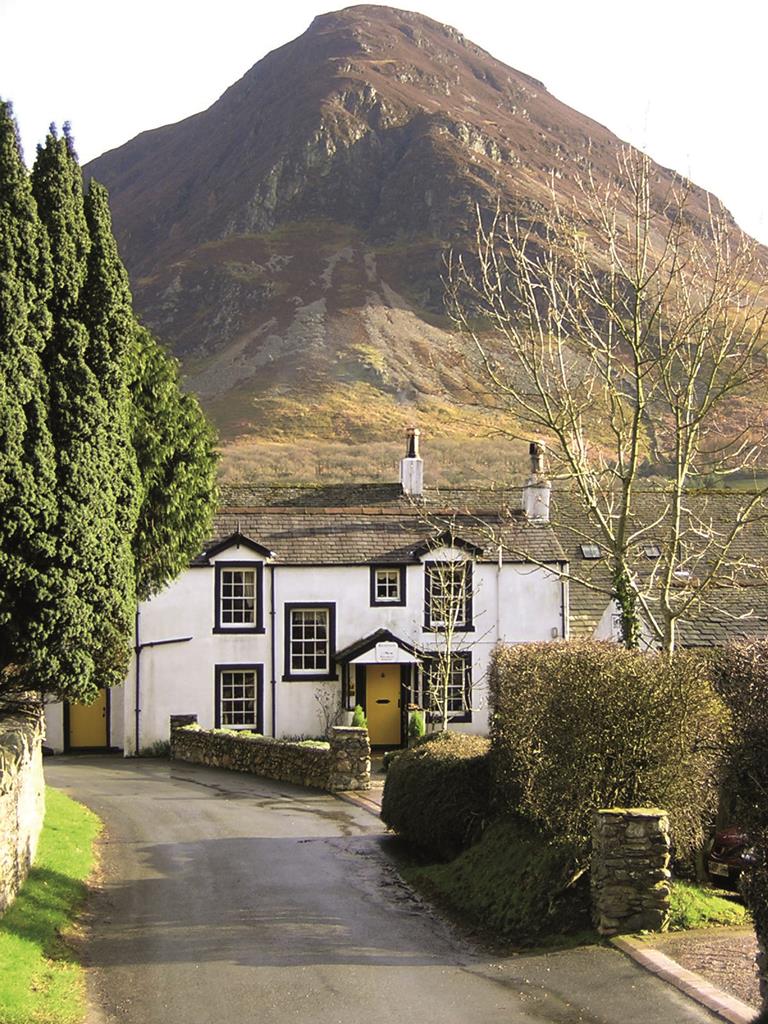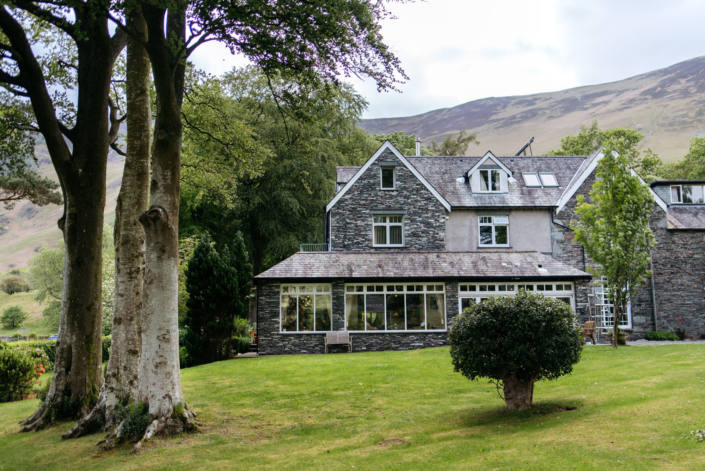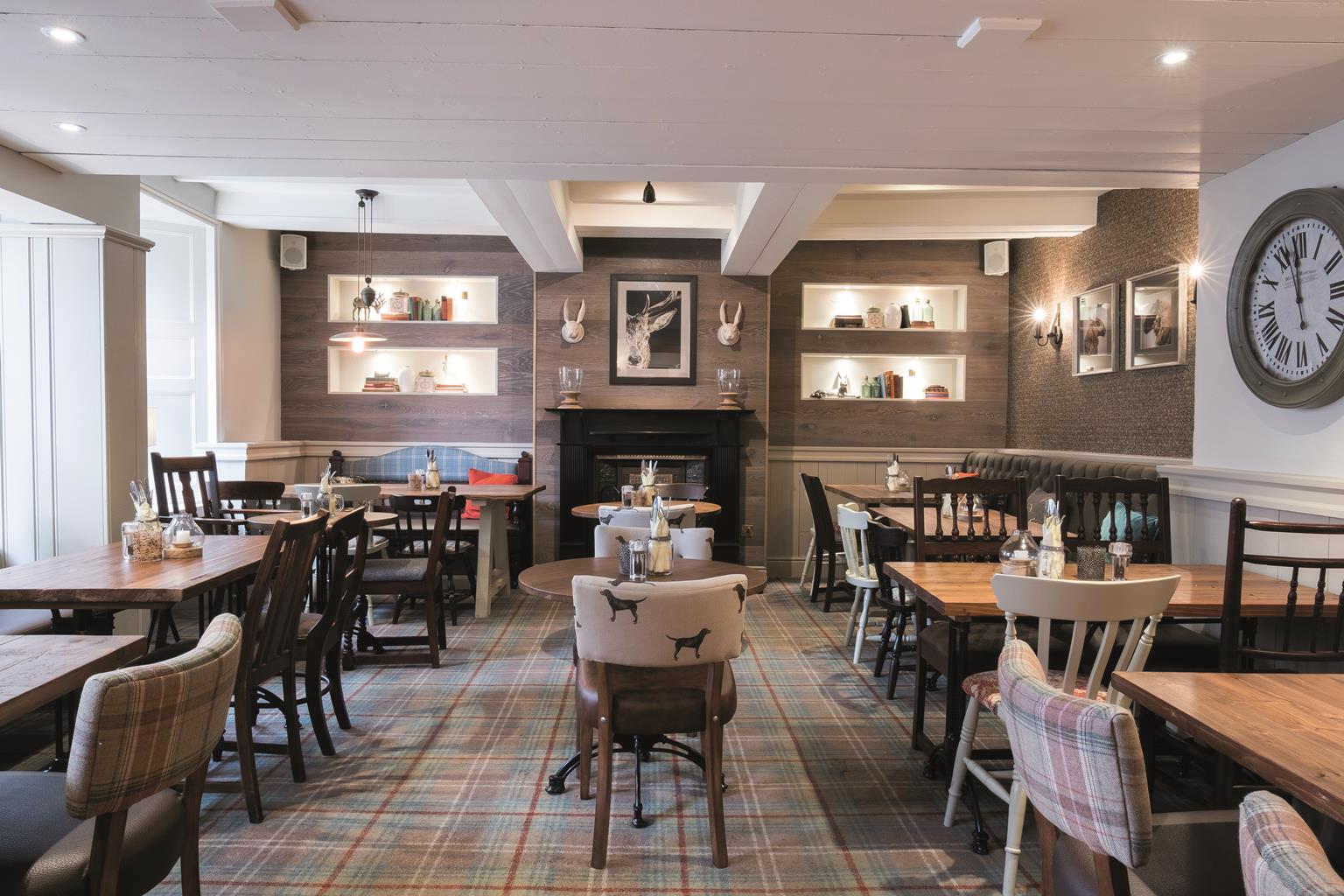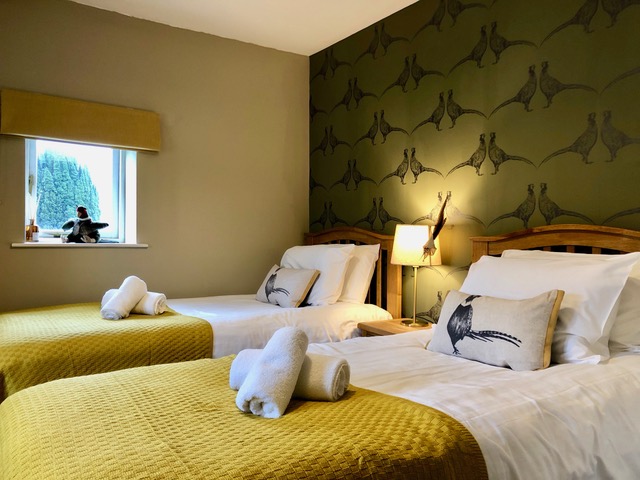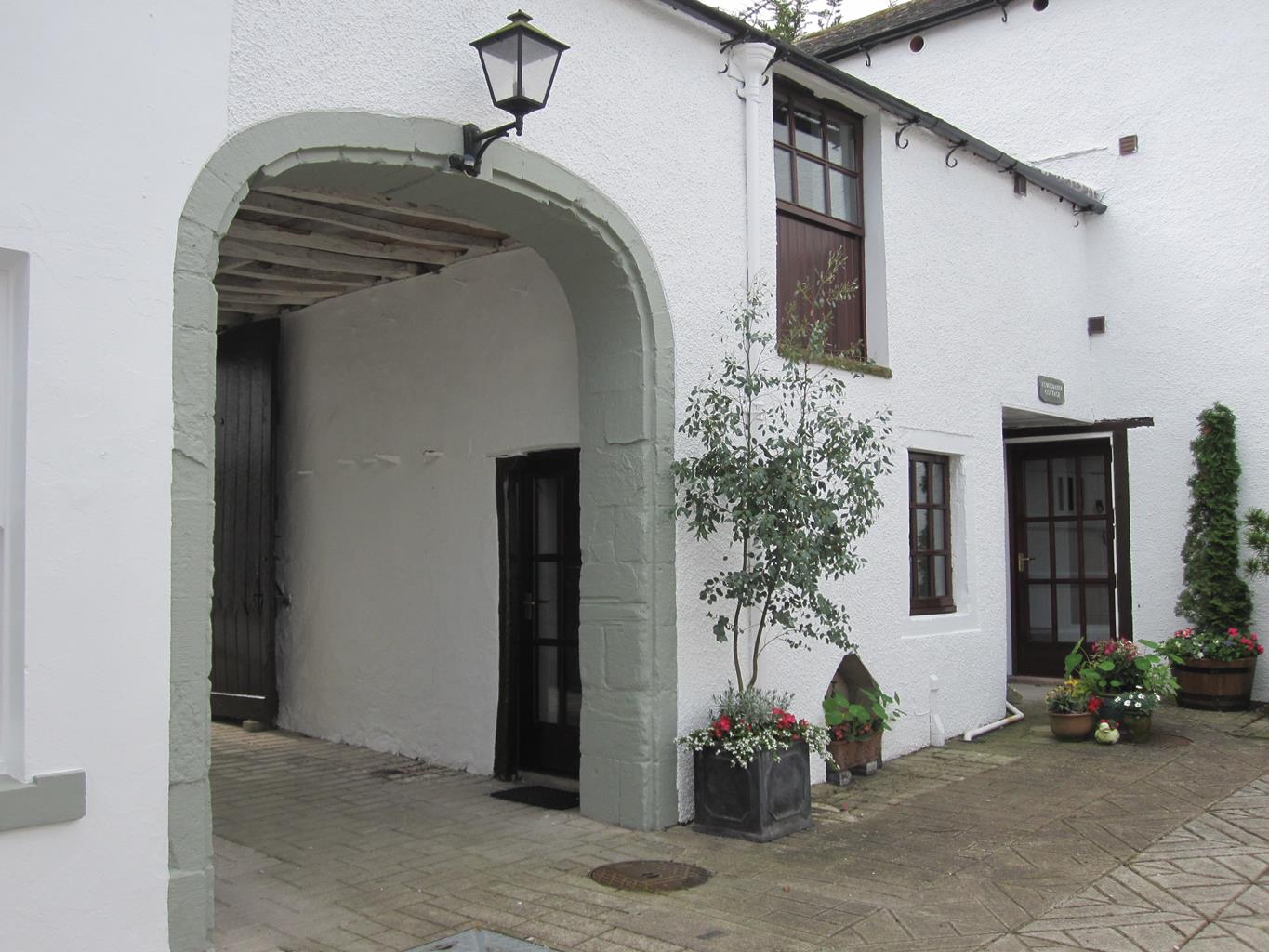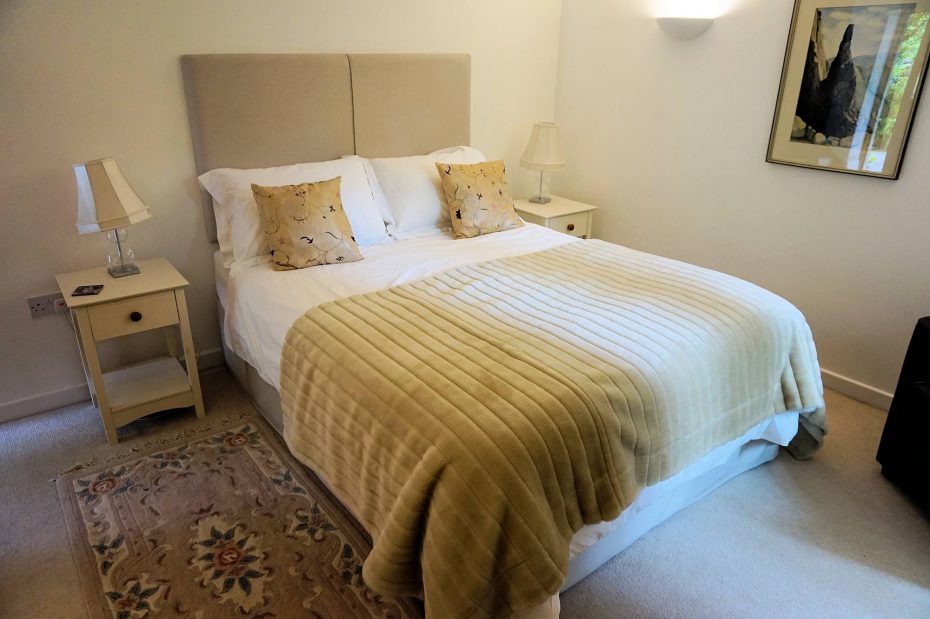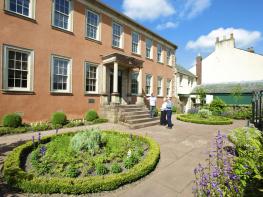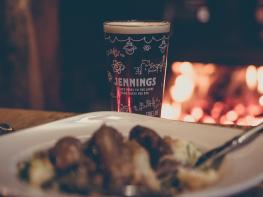This historic 16th-century inn lies in a valley surrounded by mountains. Serving great food and…
A Loweswater loop

Discovering Lakeland's finest balcony in a peaceful and little-trodden corner of the northwestern fells.
5.5 miles (8.8kms)
About the walk
Loweswater is one of Lakeland’s finest yet least talked about lakes – perhaps because it’s a bit remote from the more popular parts of Lakeland. Beyond Buttermere and Crummock Water, most people never quite get around to visiting it; possibly they’re just awed by the beauty of the other lakes. The fellwalker judges Lakeland by the height of the fells, and the fells here are low – one’s even called Low Fell. But somehow, standing on the lakeshore, it doesn’t matter.
Loweswater’s a bit of a thief: it steals the best views of Crummock Water’s fells. Grasmoor and Whiteside never looked more fair than they do from Carling Knott’s balcony path, and little Mellbreak bursts into the sky like a volcano.
Following the corpse road
Loweswater village is little more than the Kirkstile Inn, the church and the village hall, with a scattering of whitewashed farm buildings in the lush green fields and alongside the narrow country lanes. The walk starts on the outskirts of the village by Maggie’s Bridge, and uses an old corpse road to get to the fellsides. The corpses would have been parishioners from Loweswater, for the church didn’t have its own burial ground – they would be strapped onto horses’ backs before being carried all the way to St Bees on the coast. After the climb up the high sides of Carling Knott, the mourners might not have appreciated that this is one of the most splendid balcony paths in Cumbria – green, flat and true, and with wonderful views across the lake to Darling Fell.
To farmland and lake
The old track descends to farm pastures. The names of the farmhouses – Iredale Place, Jenkinson Place and Hudson Place – are all derived from the original owners’ names. Beyond the latter, the route drops to the lake. Loweswater is celebrated among anglers for its trout and its perch. Both fish are hunted down by the predatory pike, a huge streamlined fish present here in large numbers. The path continues into the National Trust’s Holme Wood. Oak predominates near the lake, although the trees at the top of the wood largely consist of pine, larch and Sitka spruce. The wood is one of the last strongholds of the red squirrel. You’re very likely to see pied and spotted flycatchers here, and maybe, if you’re lucky, a green woodpecker. The path leaves the lake behind, comes out of the woods and crosses the fields of Watergate, back to Maggie’s Bridge. Mellbreak still towers above the trees, tauntingly, tantalisingly showing off its scree paths to the summit – perhaps a walk for another day.
Walk directions
Just opposite the car park entrance, go through the gate to High Nook Farm and follow the track through the fields. After passing through the farmyard bear left along a stony track that climbs towards the comb of Highnook Beck and the craggy sides of Carling Knott.
After a gate take the right fork each time the path divides. This will bring you down to the footbridge over Highnook Beck. Once across, the route continues as a fine grassy track that doubles back right, raking across the hillside to the top of the Holme Wood plantations. The track follows the top edge of the woods before traversing the breast of Burnbank Fell.
The track swings left and climbs to reach a ladder stile and a gate to the north of the fell. Go over the stile and descend gradually northwest across high pastureland.
A couple of hundred yards short of the road, at Fangs Brow, turn right over a ladder stile and then continue along a track above Iredale Place farm. At the junction near the house, bear right to join a tarmac lane.
At Jenkinson Place the tarmac lane ends. Continue ahead and through a gate. Swing slightly left, down a faint, grassy track leading to a gate in the wall on the other side of the field. Go through this and follow the line of trees. Beyond the next gate, aim for the buildings of The Place. Just before reaching them, a gate on the left leads on to a faint path beside a wall and fence on the right. Turn right and follow the lane, which becomes a track near the shores of Loweswater before entering Holme Wood.
A wide track now heads through the woods, but by taking a clear gravel path to the left you can get nearer the shoreline. This second path rejoins the original track just beyond a stone-built bunkhouse. At Watergate Farm, turn left to follow a wide gravel road back to the car park at Maggie’s Bridge.
Additional information
Well-defined paths and tracks, all stiles have adjacent gates
Hillside, farm pastures, forest and lakes
On lead, except for Holme Wood
OS Explorer OL4 The English Lakes (NW)
Maggie's Bridge car park, Loweswater (get there early)
None on route
WALKING IN SAFETY
Read our tips to look after yourself and the environment when following this walk.
Find out more
Also in the area
About the area
Discover Cumbria
Cumbria's rugged yet beautiful landscape is best known for the Lake District National Park that sits within its boundaries. It’s famous for Lake Windermere, England’s largest lake, and Derwent Water, ‘Queen of the English Lakes'. This beautiful countryside once inspired William Wordsworth and his home, Dove Cottage, in Grasmere is a popular museum. Another place of literary pilgrimage is Hill Top, home of Beatrix Potter, located near Windermere. Tom Kitten, Samuel Whiskers and Jemima Puddleduck were all created here.
Much of Cumbria is often overlooked in favour of the Lake Distirct. In the south, the Lune Valley remains as lovely as it was when Turner painted it. The coast is also a secret gem. With its wide cobbled streets, spacious green and views of the Solway Firth, Silloth is a fine Victorian seaside resort. Other towns along this coastline include Whitehaven, Workington and Maryport. Carlisle is well worth a look – once a Roman camp, its red-brick cathedral dates back to the early 12th century and its 11th-century castle was built by William Rufus.
Nearby stays
Restaurants and Pubs
Nearby experiences
Recommended things to do
Why choose Rated Trips?
Your trusted guide to rated places across the UK
The best coverage
Discover more than 15,000 professionally rated places to stay, eat and visit from across the UK and Ireland.
Quality assured
Choose a place to stay safe in the knowledge that it has been expertly assessed by trained assessors.
Plan your next trip
Search by location or the type of place you're visiting to find your next ideal holiday experience.
Travel inspiration
Read our articles, city guides and recommended things to do for inspiration. We're here to help you explore the UK.


